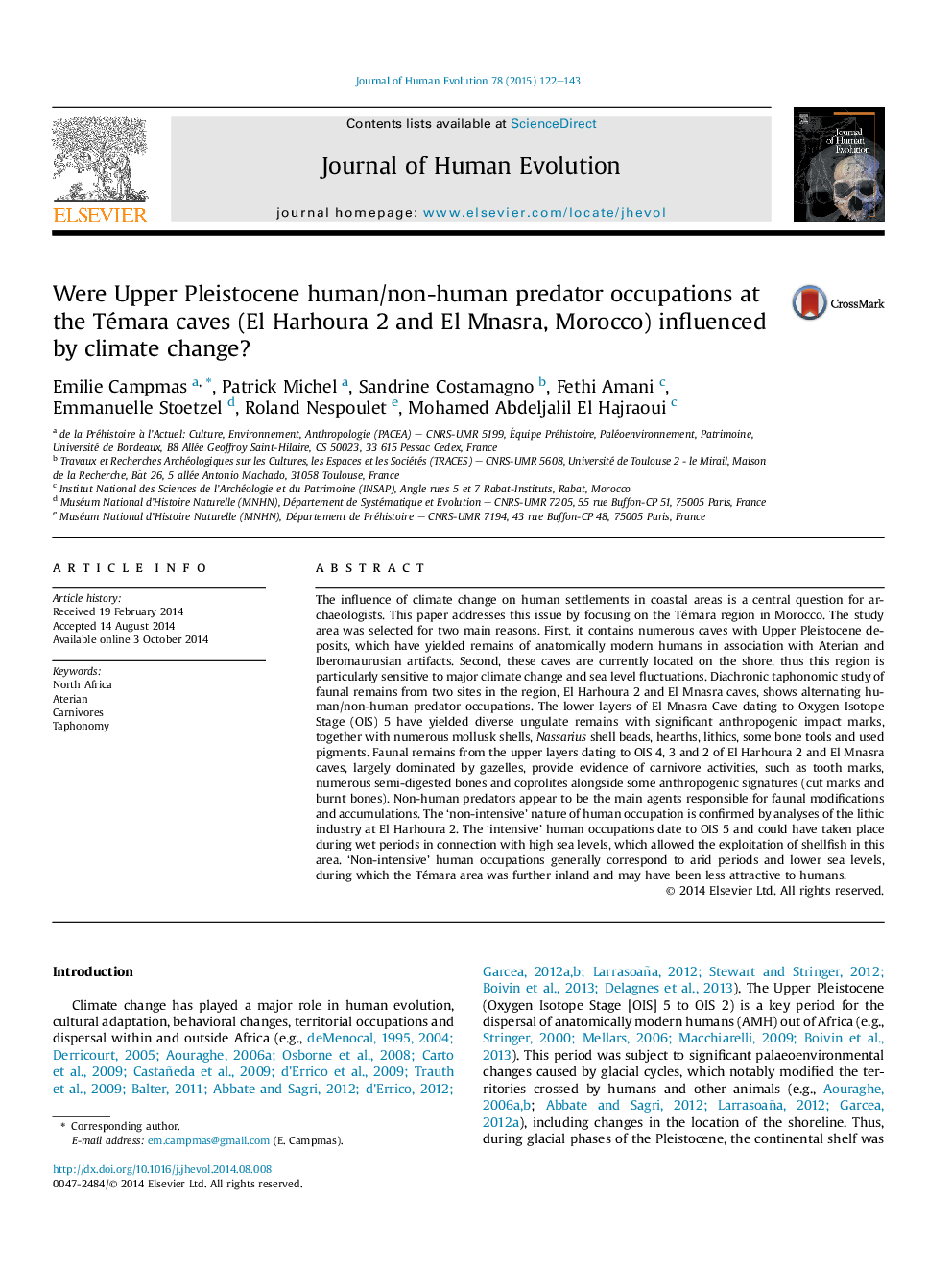| کد مقاله | کد نشریه | سال انتشار | مقاله انگلیسی | نسخه تمام متن |
|---|---|---|---|---|
| 4556011 | 1628171 | 2015 | 22 صفحه PDF | دانلود رایگان |

The influence of climate change on human settlements in coastal areas is a central question for archaeologists. This paper addresses this issue by focusing on the Témara region in Morocco. The study area was selected for two main reasons. First, it contains numerous caves with Upper Pleistocene deposits, which have yielded remains of anatomically modern humans in association with Aterian and Iberomaurusian artifacts. Second, these caves are currently located on the shore, thus this region is particularly sensitive to major climate change and sea level fluctuations. Diachronic taphonomic study of faunal remains from two sites in the region, El Harhoura 2 and El Mnasra caves, shows alternating human/non-human predator occupations. The lower layers of El Mnasra Cave dating to Oxygen Isotope Stage (OIS) 5 have yielded diverse ungulate remains with significant anthropogenic impact marks, together with numerous mollusk shells, Nassarius shell beads, hearths, lithics, some bone tools and used pigments. Faunal remains from the upper layers dating to OIS 4, 3 and 2 of El Harhoura 2 and El Mnasra caves, largely dominated by gazelles, provide evidence of carnivore activities, such as tooth marks, numerous semi-digested bones and coprolites alongside some anthropogenic signatures (cut marks and burnt bones). Non-human predators appear to be the main agents responsible for faunal modifications and accumulations. The ‘non-intensive’ nature of human occupation is confirmed by analyses of the lithic industry at El Harhoura 2. The ‘intensive’ human occupations date to OIS 5 and could have taken place during wet periods in connection with high sea levels, which allowed the exploitation of shellfish in this area. ‘Non-intensive’ human occupations generally correspond to arid periods and lower sea levels, during which the Témara area was further inland and may have been less attractive to humans.
Journal: Journal of Human Evolution - Volume 78, January 2015, Pages 122–143